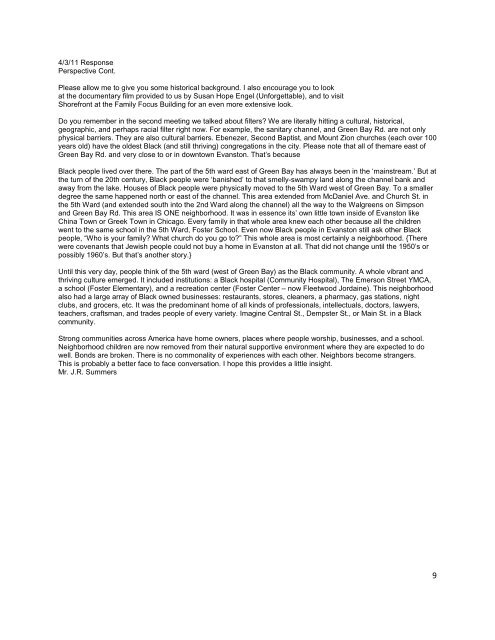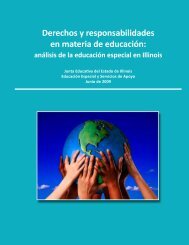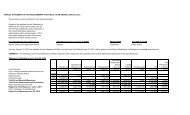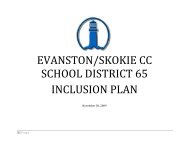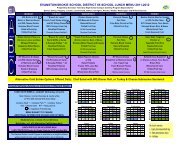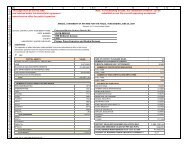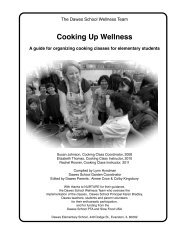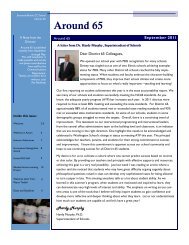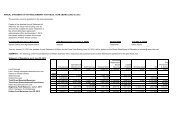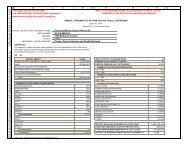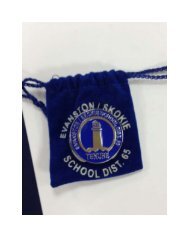Evanston/Skokie CC School District 65 New School Referendum ...
Evanston/Skokie CC School District 65 New School Referendum ...
Evanston/Skokie CC School District 65 New School Referendum ...
You also want an ePaper? Increase the reach of your titles
YUMPU automatically turns print PDFs into web optimized ePapers that Google loves.
4/3/11 Response<br />
Perspective Cont.<br />
Please allow me to give you some historical background. I also encourage you to look<br />
at the documentary film provided to us by Susan Hope Engel (Unforgettable), and to visit<br />
Shorefront at the Family Focus Building for an even more extensive look.<br />
Do you remember in the second meeting we talked about filters We are literally hitting a cultural, historical,<br />
geographic, and perhaps racial filter right now. For example, the sanitary channel, and Green Bay Rd. are not only<br />
physical barriers. They are also cultural barriers. Ebenezer, Second Baptist, and Mount Zion churches (each over 100<br />
years old) have the oldest Black (and still thriving) congregations in the city. Please note that all of themare east of<br />
Green Bay Rd. and very close to or in downtown <strong>Evanston</strong>. That’s because<br />
Black people lived over there. The part of the 5th ward east of Green Bay has always been in the ‘mainstream.’ But at<br />
the turn of the 20th century, Black people were ‘banished’ to that smelly-swampy land along the channel bank and<br />
away from the lake. Houses of Black people were physically moved to the 5th Ward west of Green Bay. To a smaller<br />
degree the same happened north or east of the channel. This area extended from McDaniel Ave. and Church St. in<br />
the 5th Ward (and extended south into the 2nd Ward along the channel) all the way to the Walgreens on Simpson<br />
and Green Bay Rd. This area IS ONE neighborhood. It was in essence its’ own little town inside of <strong>Evanston</strong> like<br />
China Town or Greek Town in Chicago. Every family in that whole area knew each other because all the children<br />
went to the same school in the 5th Ward, Foster <strong>School</strong>. Even now Black people in <strong>Evanston</strong> still ask other Black<br />
people, “Who is your family What church do you go to” This whole area is most certainly a neighborhood. {There<br />
were covenants that Jewish people could not buy a home in <strong>Evanston</strong> at all. That did not change until the 1950’s or<br />
possibly 1960’s. But that’s another story.}<br />
Until this very day, people think of the 5th ward (west of Green Bay) as the Black community. A whole vibrant and<br />
thriving culture emerged. It included institutions: a Black hospital (Community Hospital), The Emerson Street YMCA,<br />
a school (Foster Elementary), and a recreation center (Foster Center – now Fleetwood Jordaine). This neighborhood<br />
also had a large array of Black owned businesses: restaurants, stores, cleaners, a pharmacy, gas stations, night<br />
clubs, and grocers, etc. It was the predominant home of all kinds of professionals, intellectuals, doctors, lawyers,<br />
teachers, craftsman, and trades people of every variety. Imagine Central St., Dempster St., or Main St. in a Black<br />
community.<br />
Strong communities across America have home owners, places where people worship, businesses, and a school.<br />
Neighborhood children are now removed from their natural supportive environment where they are expected to do<br />
well. Bonds are broken. There is no commonality of experiences with each other. Neighbors become strangers.<br />
This is probably a better face to face conversation. I hope this provides a little insight.<br />
Mr. J.R. Summers<br />
9


